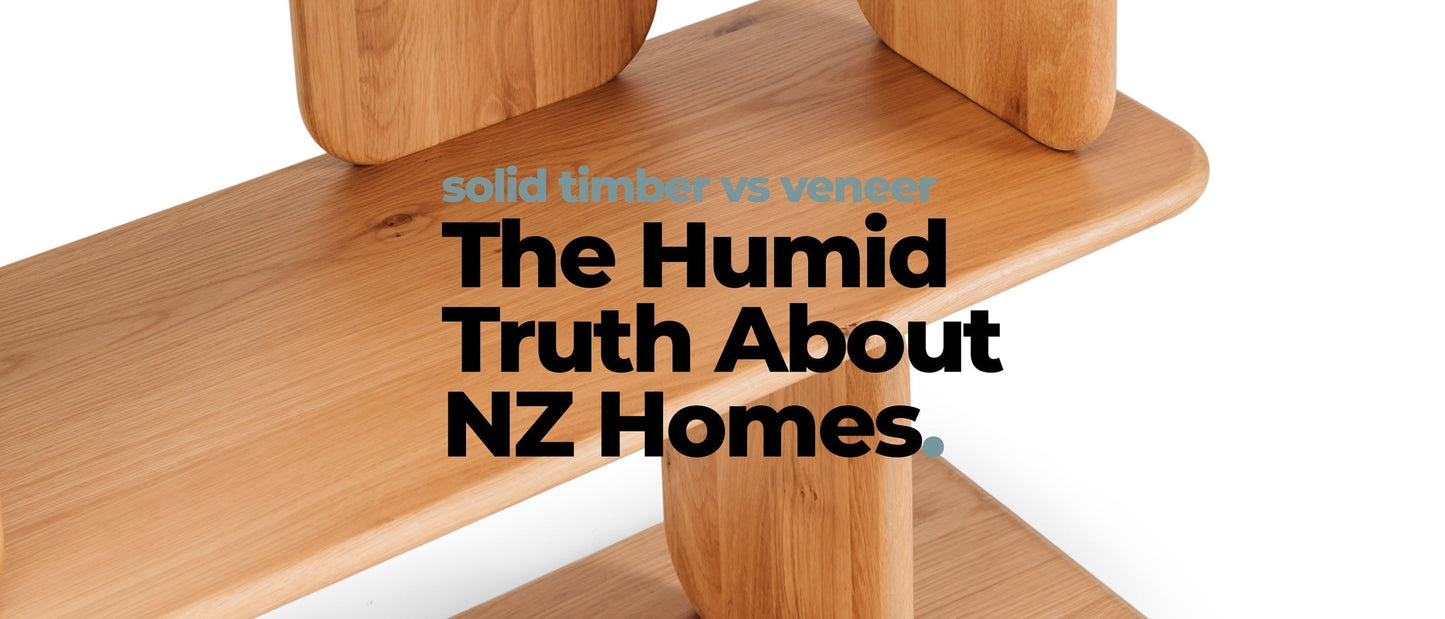“Veneer” gets an unfair rap, as if the word itself belongs in a bargain bin aisle. In reality, high-quality veneer furniture is still timber, just used in clever ways. Let’s break it down:
Dimensional Stability & Resistance to Warping
Veneer is a thin layer of real wood applied to a stable core (like premium plywood or MDF). That stable base keeps everything flat and true, even when NZ’s humidity does its best impersonation of a mood ring. This makes veneer ideal for those big, flat surfaces where solid wood might throw a wobbly.
Design Flexibility & Aesthetic Versatility
Because veneer sheets are thin and flexible, artisans can do things that solid timber simply can’t. Book-matching, for example, creates mirrored grain patterns that flow across panels like the wings of a butterfly. Veneer can even be wrapped around curves and intricate shapes — meaning more daring, modern, and custom designs without the scary price tag.
Efficient Use of Resources & Sustainability
Veneer squeezes every drop of potential out of a single log. Instead of cutting thick planks, the log is sliced into many thin sheets, resulting in less waste and greater coverage. For rare or slow-growing species, that efficiency makes veneer a far more sustainable option. One log of walnut, for instance, can stretch to cover dozens of pieces.
Consistent Appearance & Uniformity
Because veneer is cut from a single log in a controlled way, you can achieve a consistent look across an entire project. If you want a dining suite, sideboard, and cabinets that all feel cohesive, veneer is your friend. Solid timber? Gorgeous, but a little more… chaotic.
Access to Exotic Woods & High-End Look for Less
Veneer makes it possible to enjoy exotic or luxury timbers like walnut, rosewood, or mahogany without selling your car to pay for it. You still get the look and feel of rare wood, but at a price that won’t make you sweat.
Pictured: The Panel Bookcase is made entirely from veneered timber.









